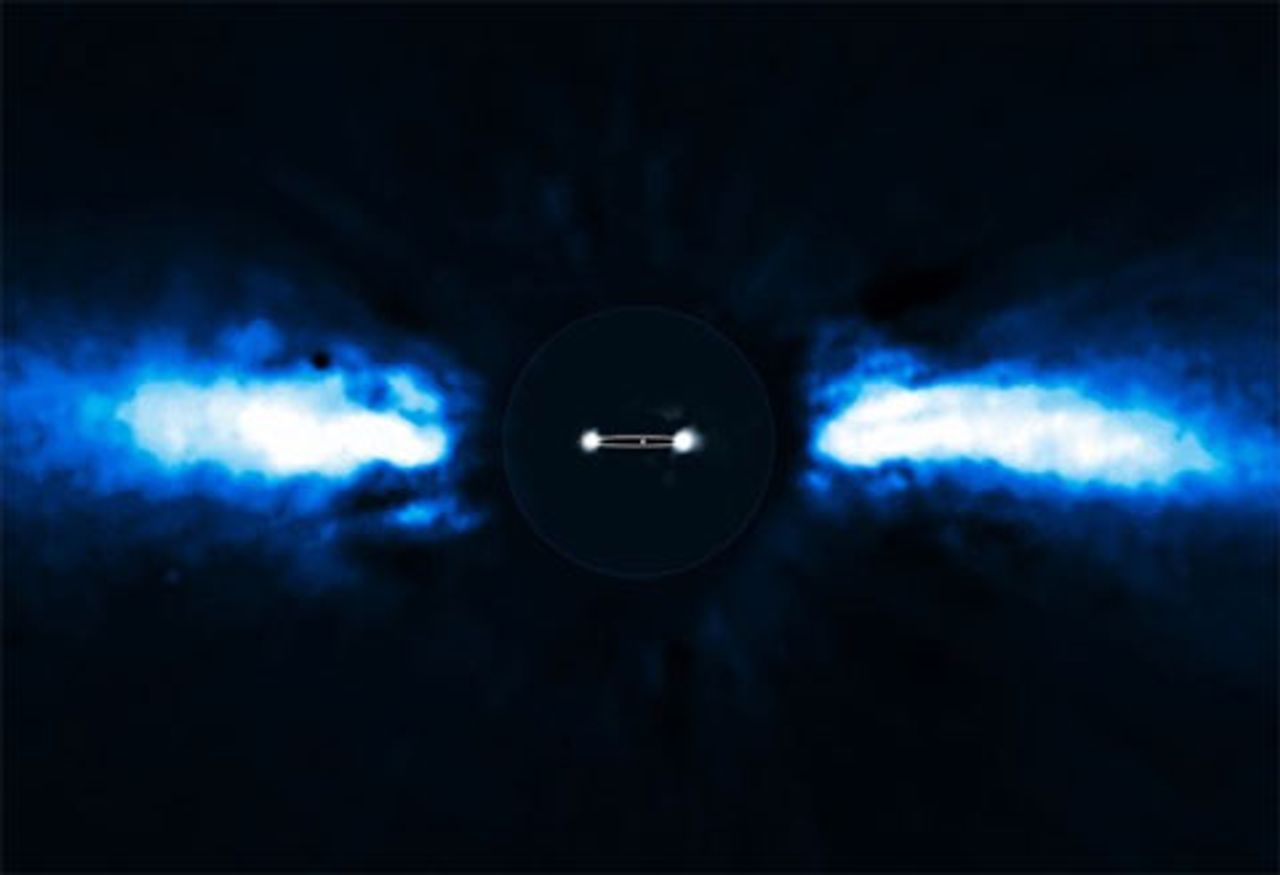 Beta Pictoris | Credit: ESO/A.-M. Lagrange
Beta Pictoris | Credit: ESO/A.-M. LagrangeFor the first time in the history of the search for planets outside the solar system, astronomers have observed a planet going from one side of its parent star to the other.
The star is named Beta Pictoris, a young star only a few million years old, compared to the estimated 4.5 billion years our Sun has been in existence. Despite its recent origin, Beta Pictoris is already twice the mass of the Sun and nine times its brightness. At 63 light years away (around 370 trillion miles), Beta Pictoris can be seen with the unaided eye in the Southern hemisphere.
The picture shown here was taken with the 8.2 meter (27 feet) diameter telescope at the European Southern Observatory. The star is represented by a dot in the center of the picture, as the actual star's brightness would swamp out any other effects. The blotting out of the image of the star was done using a metal plate inside the camera, which is the large disk in the center of the picture. This lets astronomers see very faint objects close to the star.
A composition of images was used to make the picture. The first image of the planet was taken in 2003. In 2009, the planet again appeared on the opposite side of the star. When data from 2008 was reviewed, the planet couldn’t be seen at all, suggesting that it had been too close to the star to be seen with the telescope. This is crucial information, revealing that the object is indeed a planet, and not some background object caught in the image. Most important, it is confirmation that the scientists did indeed observe the planet completing half its orbit around Beta Pictoris.
Knowing the time it takes to traverse its orbit, astronomers then calculated the star’s mass. In addition, despite the fact that we are seeing the orbit almost edge on, the fact that the orbit goes out further to the left than to the right shows the planet's path to be highly elliptical. So much so, that if the planet were in our own solar system, all the planets beyond Mars would constantly be disturbed by the gravity of this planet.
The outer blue streams of material are actually the gas and dust of the rest of the Beta Pictoris system. Since the star is still young, it hasn't cleared out its stellar neighborhood of all the flotsam and jetsam that coalesce around newborn stars. These streams were first imaged in 1996, and the shape suggested that a planet might be orbiting the star. However, the technology of the time wasn't able to pierce the star’s brightness to see such a faint object.
